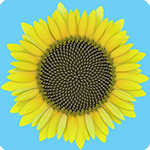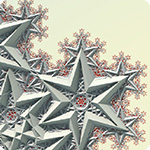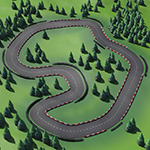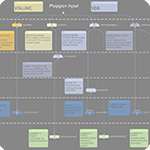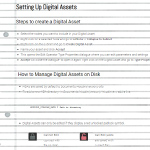An in-depth tutorial on the principles of writing L-Systems in Houdini using examples from Aristid Lindenmayer’s book ‘The Algorithmic Beauty of Plants’ (1:39:07 minutes)
Category Archives: Posts
How to create L-Systems
Using examples from: The Algorithmic Beauty of Plants: http://algorithmicbotany.org/papers/abop/abop.pdf Contents To see the full turtle sequence being generated by an L-System open up an HScript Textport (alt+shift+t) And type: opinfo /pathto/L-SystemYou can drag the L-System node into the textport to get the path automatically. Turtle sequence The basic L-system commands are used to draw a line […]
UV Tools
This Tutorial is an Overview of all the different nodes available to create UVs in Houdini, and also covers setup, display and previewing of UVs and textures in Houdini, and demonstrates a quick way to display PBR textures. (57:21)
Copy Stamping and the Foreach Loop
This tutorial describes how to use point attributes to influence upstream input nodes, first using the traditional Copy Stamp Node then again using the Foreach Loop nodes as recommended by sidefx. Then it takes an in depth look at the other uses of a Foreach loop: Looping by pieces, by number, and fractals. (77:38)
Lines and Curves
Back to basics, with an explanation of how curves are used in Houdini, covering the Line, Curve, Ends, Curvedraw and add nodes. The these are shown in action when we create a procedural racing track generator (64:25)
Introducing Volumes and VDBs
An introduction to the different types of volumes Houdini can create, and some examples of their
use in procedural geometry creation. (61:27 minutes)
Volumes and VDBs
A guide to the different types of volumes in Houdini, and some basic networks for common uses of volumes in procedural modelling
Attribute Transfer Node
This tutorial looks at the Attribute Transfer Node which passes information from one object to another based on their position in space. It uses a network that places tree roots on a hillside to demonstrate various ways in which attribute transfer can be used to create realistic procedural scenes. (54:00)
All About Houdini Digital Assets
Houdini Digital Assets (HDAs) are networks of nodes that can be packaged up to simplify commonly used tasks in Houdini or to create tools that can be used in external software.
This tutorial shows you how to set them up for different uses and to create correctly formatted geometry. (51:55)
Setting Up Digital Assets
Steps to create a Digital Asset Select the nodes you want to include in your Digital Asset Right click on a selected node and go to Actions -> Collapse to Subnet Right click on the subnet and go to Create Digital Asset Name your asset and click Accept This opens the Edit Operator Type Properties […]

